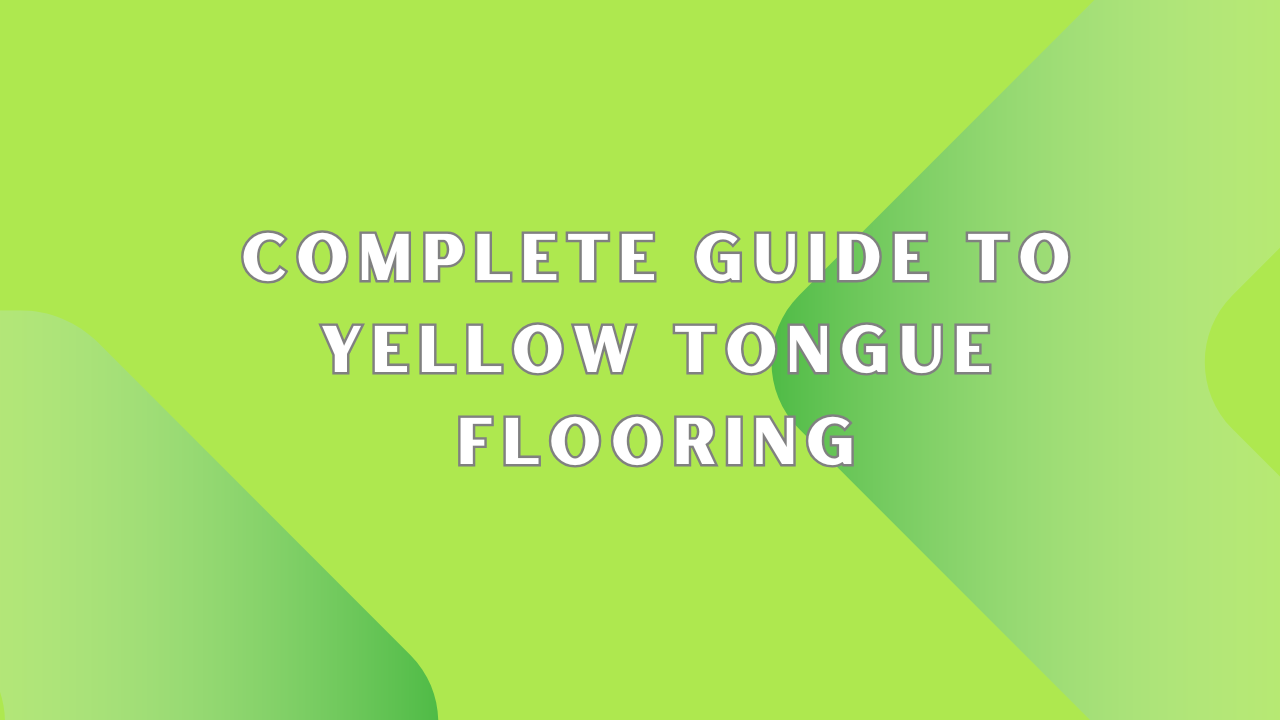Yellow tongue flooring is a classic example of a subfloor that meets strength, affordability, and moisture-proof qualities. Interestingly, this subfloor is becoming more and more famous for its many qualities and uncompromising unique design across Australia. However, standard terms like Yellow Tongue in the construction industry are difficult to digest if you are completely naive and leave everything to a builder. That is why, it makes sense to learn about yellow tongue flooring and its modern solutions to homes. In this blog, let’s dive deep into the complete guide to understanding yellow tongue flooring, its upsides, downsides, uses, and maintenance, to set clear expectations before buying.
What is Yellow Tongue Flooring?
Yellow tongue flooring is a strong and flat board that serves as a base before installing tiles, carpets, or marble. In the construction industry, this type of flooring is known as subfloor. It is more common in residential and commercial buildings and is a combination of wood particles which are pressed together with the help of an adhesive to create a tight bond.
As strange or cosmetic as the name itself would imply, the yellow tongue has a significant meaning. This is a special plastic piece along the edge of the board that helps every board lock firmly together on the foundation, and the yellow colour helps in identifying this piece easily.
Positive Aspects:
Let’s begin to understand the positive aspects of yellow tongue flooring.
- Strong and Durable:
When it comes to raw materials, a particle board is a panel which processes under pressure and heat from particles of wood. This material makes high-quality and weather-resistant yellow tongue flooring which supports heavy loads, especially if you are installing it over high foot traffic areas like a kitchen and bathrooms.
- Keeps Moisture Away:
While not completely waterproof, the subfloor sits well on locations where occasional spills or moisture exposure is more likely to happen. With the least absorption padding, you can easily install them over and be worry-free from moisture bending the boards.
- Easy To Install:
The yellow and groove design of the subfloor is easy to install. The yellow joints reduce any gaps during installation, make the surface smooth, and prevent the subfloor from moving after final flooring finishing.
- Similar Thickness Across Every Board:
With 19 mm thickness, yellow tongue flooring remains even and perfect for the final flooring. This allows the final flooring to look even and better from every angle.
Downsides:
Let’s now look at a few of the downfalls when considering yellow tongue flooring.
- More Weight Than Other Subfloor:
The yellow tongue subfloor can be denser which makes it difficult to handle and install. Professionals may charge more for labour costs which increases the overall cost of installation.
- Termite Prone:
Wood-based subfloors or floors are naturally vulnerable to termites, which can be a concern when buying yellow tongue flooring as well. It is important to either find the termite-treated variations of the yellow tongue flooring or look for pest control measures to avoid any pest attack incidents in the first place.
Uses of Yellow Tongue Flooring
Here are some of its practical uses:
- Subflooring for Homes:
The structural material is good for subflooring in the living room, bedroom, or hallway in residential homes.
- Kitchens and Bathrooms (Moisture-Prone Areas):
It is a good option for areas that may experience occasional spills, such as kitchens and bathrooms.
- Flooring in Multi-Level Homes:
In multi-story homes, you can install yellow tongue flooring between floors for strength and a stable foundation for upper-level floors.
- Building Renovations:
Yellow tongue flooring is useful for home renovations for adding new rooms or floors to a structure.
- Commercial Buildings:
The flooring is a great investment for office buildings and retail spaces, where the flooring needs to support high foot traffic and heavy furniture or equipment.
- Construction in Outdoor Sheltered Areas:
While it’s not suitable for outdoors, Yellow Tongue flooring is good for areas like verandas, patios, or carports, provided there is some protection from direct exposure to water.
- Temporary Flooring in Construction Projects:
During the construction process, the subfloor can also create safe walkways or platforms for workers.
Final Words
We hope you found this blog useful. Coming to an end, Greenhill yellow tongue flooring is a reliable subflooring for both residential and commercial buildings. Throughout the guide, we learnt that its moisture resistance, stability, and extraordinary design make it fit for use, however, the dense material that does not promise termite resistance can be a temporary unsettlement.
It is best to find professionals who can efficiently and safely handle the yellow tongue flooring and use necessary treatments or finishes to prevent any future problems.


